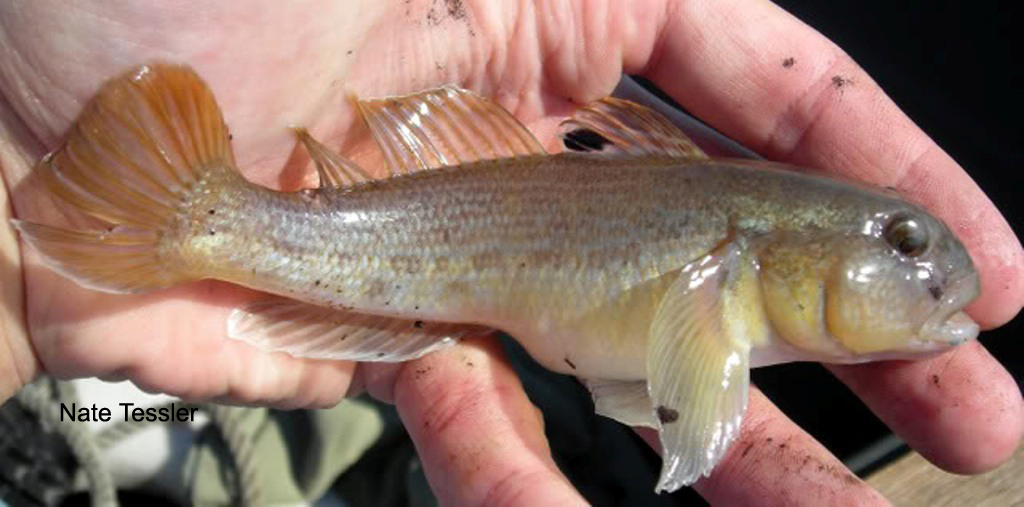Round Goby
(Neogobius melanostomus)

This small fish invaded Lake Erie in the mid 1990's and has since become very abundant and has caused a many problems for native fish species.
Description
Like all gobies, the round goby has its two pelvic fins fused into a single suction cup shaped fin. This feature alone will distinguish them from any native species of fish found in Ohio. Additionally, the round goby has two dorsal fins and there is usually a dark spot on the front dorsal fin. The body is an olive green color with darker brown blotches. The eyes are located on top of the head and they have very thick lips giving them a frog like appearance. Round gobies differ from the tubenose goby (another introduced species) by lacking tubular nostril extensions, having eyes that protrude from the top of the head, and having a dark spot on the first dorsal fin.
Habitat and Habits
The round goby originated from the Black and Caspian Seas in Europe and was introduced to the Great Lakes by the release of ballast water from large trans-Atlantic cargo ships around 1990. They were first found in Lake Erie in 1995. They are found in rocky areas and live in and around crevices in the rocks. Since they became established in Lake Erie they have eliminated nearly every small bottom dwelling fish, such as darters and sculpins, which were once found there. They also have been found to cause significant damage to the nests of smallmouth bass by consuming the eggs and young. It is illegal to transport this species from Lake Erie under any circumstances. Please do your part to prevent the spread of this aquatic nuisance species.
Reproduction and Care of the Young
Male round gobies aggressively defend their nesting sites protecting their eggs and young. Additionally this species spawns multiple times during warmer months of the year causing them to be very prolific.